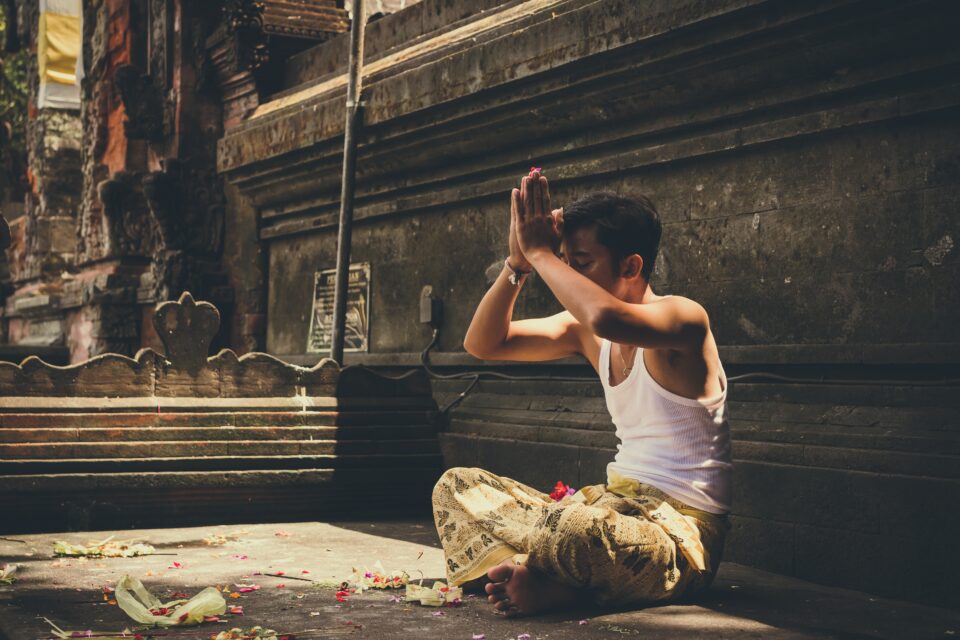Before the arrival of Islam, Minangkabau had been visited by Hindus and Buddhists.
Many theories have been put forward by experts regarding the arrival of Hinduism and Buddhism to the archipelago, mostly Dutch thinkers who had lived in Indonesia in the past, such as N.J. Chrome Bosch and JC. Van Leur. The coming and growth of Hinduism and Buddhism to the archipelago have swayed some areas, especially Sumatra and Java. Further development showed Hinduism flourished well in Java following its fertile lands, which are obviously seen in assorted physical and cultural evidence and legacies.
Hinduism has not developed in Minangkabau, yet it is hard to gainsay the fact it helped enrich the Minangkabaunese traditions for generations. Even the traces of Hinduism are still around in the day-to-day actual life of Minangkabaunese now. The massive idea of progress is not always compatible with lost tradition. Judging from the school of functionalism founded by William James, this confirms that any particular culture will survive if the community still enjoy its benefits.
This factor makes Hindu influence still in existence. In practice, one of the Hindu cultures that still attracts a lot of enthusiasts in West Sumatra is the “mandi balimau“ ritual. It is conducted by splashing a mixture of floral water and lime juice on the body before entering the water. Sastra G (2012) said this tradition, which is carried out by the Muslim community in preparation for Ramadhan, copies the Hindu tradition to respect Gangga (the goddess of purification and forgiveness) and Batara Surya (the god who rules the sun). This ritual is a matter and scene of routine among Minangkabaunese in spite of its recent declining trend.
Traditionally, the initial government system in Minangkabau is known as kelarasan (political system), either Koto-Piliang or Bodi-Chaniago. Laras Koto Piliang is grounded in the philosophy of “bajanjang naiak“ (rule to obey) “batanggo turun” (norm to follow) and “titiak dari ateh” (decisions that come from above). If a problem cannot be figured out in nagari (the biggest unit of traditional Minangkabau social organisation), it is forwarded to the penghulu suku (clan leader). It can even be overcome by Rajo Alam as the highest ruler. In terms of architecture, rumah gadang (Minangnese traditional house) and its hall have multi-level floors, just like the caste system in Hinduism.
In contrast, Laras Bodi-Chaniago is based on the principle of “duduak samo randah tagak samo tinggi“ (sit low, stand high) and “mambusek dari bumi” (bursting from the earth). This highlights equality among the penghulu (clan leader). They do not need to ask for Rajo Alam’s consideration and advice to settle any problems as Laras Bodi-Chaniago does not recognise a king’s power. The problem will be brought to Balai Nan Panjang (deliberation place) in Tabek, which is a place to decide on the problem of the Laras Bodi Chaniago. In terms of architecture, meanwhile, their rumah gadang and its hall floors are flat. This illustrates the equality of people who do not justify social stratification.
In Tambo (traditional narrative from Minangkabau) it is explained that the ancestors of the Minangkabau people came down from Mount Merapi, saying “di mano mulo nyo titiak palito, di baliak tolang nan batali, di mano turunnyo niniek kito, di puncak Gunuang Merapi“(where is the origin of the light; it was behind the bamboo that had rope; where did our ancestors step down, it was on the top of Mount Merapi). This has been criticised by the Haji Rasul (Hamka’s father). Later Datuak Sangguno Dirajo made a report to the Dutch government for this criticism. As a result, Haji Rasul had to pay a fine after losing the trial for his criticism. It was based on the idea that the mountain is a residence of the gods as Hindus believe. According to Haji Rasul, this tradition must be made clear to the next generation as it does not make sense.
Furthermore, Hinduism has also been traced in the funeral procession, particularly among people in rural areas or villages. They adopt “manujuah, maampek puluah dan manyaratuih hair” – supplication for the late people at the seventh, fortieth and hundredth days. This is truly un-Islamic and remaining elements of Hinduism instead.
It is inferred that the advent of Islam to Minangkabau has not immediately obliterated Hindu influence as a whole. Historically speaking. the spread of Islam in the archipelago, including in Minangkabau, heavily relied on traditions highly coloured by Hinduism, as the Wali Songo (nine propagators of Islam) did in Java.




